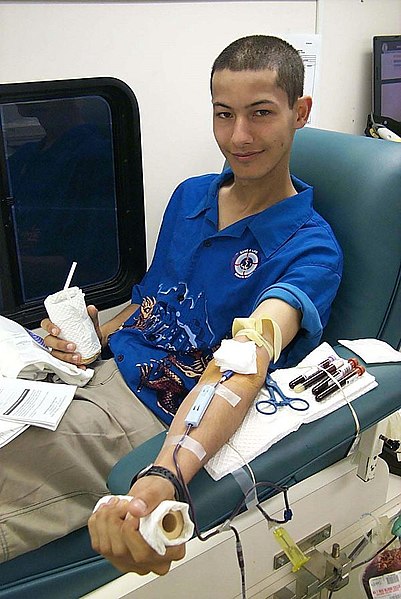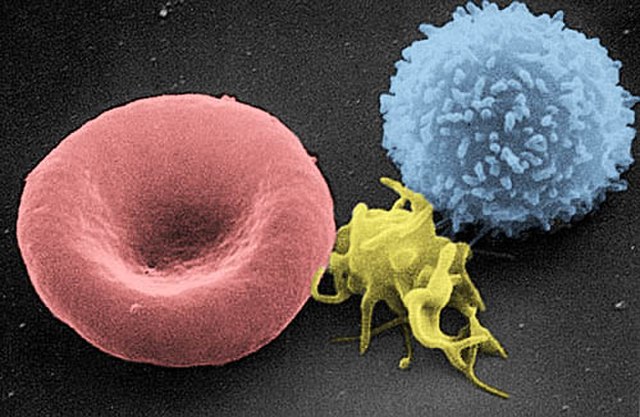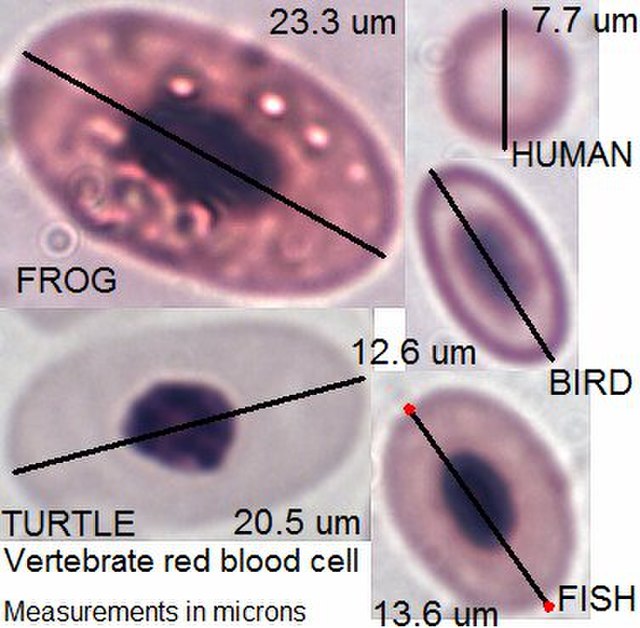A blood donation occurs when a person voluntarily has blood drawn and used for transfusions and/or made into biopharmaceutical medications by a process called fractionation. Donation may be of whole blood, or of specific components directly (apheresis). Blood banks often participate in the collection process as well as the procedures that follow it.
Blood donation center at the University Hospital of Basel, Switzerland. From left to right: Two cell separators for apheresis, secluded office for pre-donation blood pressure measurement and blood count, and on the right, chairs for whole blood donations.
A blood collection bus (bloodmobile) from Japanese Red Cross at Myōdani Station in Suma-ku, Kobe, Hyōgo Prefecture, Japan
A US Navy sailor donating blood
A donor's arm at various stages of donation. The two photographs on the left show a blood pressure cuff being used as a tourniquet.
Blood is a body fluid in the circulatory system of humans and other vertebrates that delivers necessary substances such as nutrients and oxygen to the cells, and transports metabolic waste products away from those same cells.
Venous (darker) and arterial (brighter) blood
Two tubes of EDTA-anticoagulated blood. Left tube: after standing, the RBCs have settled at the bottom of the tube. Right tube: Freshly drawn blood
A scanning electron microscope (SEM) image of a normal red blood cell (left), a platelet (middle), and a white blood cell (right)
Vertebrate red blood cell types, measurements in micrometers








